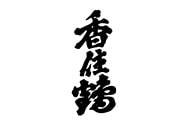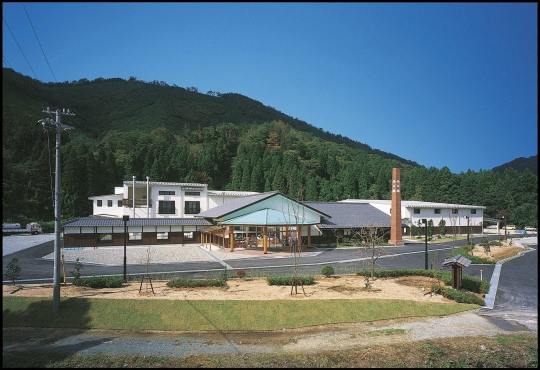#Seizo Fukumoto
Explore tagged Tumblr posts
Text

どこかで誰かが見ていてくれる-日本一の斬られ役・福本清三 福本清三・小田豊二 創美社
#どこかで誰かが見ていてくれる-日本一の斬られ役・福本清三#どこかで誰かが見ていてくれる#seizo fukumoto#福本清三#toyoji oda#小田豊二#anamon#古本屋あなもん#あなもん#book cover
19 notes
·
View notes
Text

Seizo Fukumoto (福本清三) in “The Last Samurai”.
28 notes
·
View notes
Text

Legendary Seizo Fukumoto
Fukumoto's career spans a half century, originating in the postwar heyday of Japanese cinema. Since then, he has gushed forth rivers of fake blood and been cut to ribbons that would stretch for miles. He has been killed on screen more than 50,000 times — more than once in some films. "When I was younger, our studio had some 400 stuntmen and extras," he remembers. "I wanted to stand out. I wanted to be on screen. The best way to do that was to become a 'chopped-up actor' and to fight with the stars." Fukumoto's art is known in Japanese as tate, a stylized sort of stage combat that combines elements of martial arts, dance and kabuki theater. Its use in Japanese film has influenced foreign cinematic styles from "spaghetti Westerns" to Hong Kong kung fu flicks. But few Japanese actors practice it today.
12 notes
·
View notes
Photo

Repost by @pathofthesamurai ——— Tom Cruise and Seizo Fukumoto in The Last Samurai __ __ __ __ __ #pathofthesamurai #kyudo #martialarts #iaido #kenjutsu #japanesesword #japanculture #california #wayofmartialarts #samurai #ronin #kobudo #samuraigirl #bushido #Aikiken #kendo #musashi #sword #ninja #naginata #shinobi #assasin #warrior #katana #blade #japanese #japan #japanesestyle https://www.instagram.com/p/CKlRh3kJO38/?igshid=1qfzse7hwvunm
#pathofthesamurai#kyudo#martialarts#iaido#kenjutsu#japanesesword#japanculture#california#wayofmartialarts#samurai#ronin#kobudo#samuraigirl#bushido#aikiken#kendo#musashi#sword#ninja#naginata#shinobi#assasin#warrior#katana#blade#japanese#japan#japanesestyle
0 notes
Text
Kasumitsuru Co., Ltd.


Adresse 600-2 Kasumiku Kobara, Kami, district de Mikata, Hyogo Date de création 18 décembre 1945 Représentant Yoshio Fukumoto Histoire Fondée à Kyoho en l'an 10 de l'ère Shōwa (1725 après J.-C.), la marque célèbre sa 294e année d'existence. En décembre 1945, l'entreprise fusionne avec trois autres brasseries de la région. Seizo Fukumoto de la brasserie Fukumoto Shuzojo - la plus grande des trois - en devient le PDG. Visant à créer un saké sensiblement différent de celui des autres entreprises, Seizo Fukumoto utilise depuis 1967 le "Yamahai Shikomi », une méthode de préparation utilisant de la levure naturelle et sans brassage, et a également adopté cette méthode pour la fabrication de saké standard. Pendant la période d'après-guerre, les ventes ont pu baisser en raison d'une demande croissante pour les « nada brand ». Cependant, le volume des ventes de l'entreprise s'est accru à partir du milieu des années 70, car celle-ci s'est attachée à poursuivre et à renforcer ses politiques de gestion orientées vers la qualité des produits. L'entreprise a également relancé la méthode "Kimoto zukuri" (le plus ancien style traditionnel de fabrication de saké encore utilisé aujourd’hui) à partir de l'année de brassage 1999. Soucieuse de poursuivre sa croissance, l'entreprise s'est installée en octobre 2003 sur son site actuel d'Ohara, à Kasumi-ku, avec des projets visant à développer des produits à haute valeur ajoutée et à consolider la force de l'entreprise. En outre, elle a adopté les méthodes Yamahai ou Kimoto pour la fabrication de tout le saké à partir de l'année de brassage 2011, ce qui est encore une pratique très rare au Japon. En utilisant un riz optimal pour la fabrication du saké (Yamadanishiki, Gohyakumangoku et Hyogokitanishiki), l'entreprise vise à toujours produire un saké de haute qualité. Caractéristiques de l'entrepôt, philosophie de fabrication L'ensemble de la production de saké est brassé selon les méthodes Kimoto et Yamahai, ce qui leur donne une saveur unique. L'eau est tirée d'une source souterraine des cours d'eau limpides de la rivière Yada, qui proviennent du plus haut sommet de la préfecture de Hyogo, le mont Hyono. L'entreprise a hérité des techniques de Toji Tajima, l'un des quatre grands maîtres brasseurs. Nous brassons un saké qui met en valeur les savoureux ingrédients de Tajima. Caractéristiques de la région — géographie/météo/culture locale, etc. L'entreprise est située dans le quartier de Kami, dans la partie nord de la préfecture de Hyogo. C'est une ville à la nature riche qui fait face à la mer du Japon, avec de grandes différences de température tout au long de l'année, allant des étés chauds aux hivers froids. La ville entière appartient en fait au géoparc de San'in Kaigan (en français, « de la côte de San’in »), et la ville abrite également une partie du parc national de San'inkaigan ainsi qu’une partie du parc quasi national de Hyōnosen-Ushiroyama-Nagisan. La rivière Yada se jette dans la mer du Japon dans la région de Kasumi, en provenance de la région d'Ojiro. La ville connaît également de fortes chutes de neige. Avec une abondance d'ingrédients culinaires variés, la région est très active dans le domaine de la pêche (crabe matsuba, crabe de Kasumi, calamar), de l'élevage de bœuf de race Tajima et la culture du riz en terrasses. Précipitations annuelles/chutes de neige/ensoleillement Précipitations annuelles:2 651 mm, chutes de neige annuelles:390 cm, ensoleillement annuel:60 jours (en 2018) Températures annuelles max./min. (℃) Température annuelle la plus élevée:37,2℃, température la plus basse:-4,3℃ (en 2018)

0 notes
Text
Kasumitsuru Co., ltd.


Address 600-2 Kasumiku Kobara, Kami, Mikata District, Hyogo Date Established 1945 (18th December, Showa 20) Representative Yoshio Fukumoto History Founded in Kyoho 10 (1725 AD), the brand is celebrating its 294th year. In December 1945, the company merged with three other breweries in the area. Seizo Fukumoto from Fukumoto Shuzojo, the largest of these breweries, became the CEO. Aiming to create a sake that is a bit different from that of other companies', since 1967, Seizo Fukumoto has been using "Yamahai Shikomi" (a preparation method using natural yeast and no mashing), and has also adopted this method for manufacturing standard sake. During the country's post-war period, there were times when sales declined due to a growing demand for "Nada brand." However, the company's sales volume increased from the mid-1970s, as it focused on continuing and strengthening its quality-oriented management policies. The company also revived the "Kimoto zukuri" method (the oldest surviving traditional style of sake-brewing) from the 1999 brewing year. Fixed on further growth, the company relocated to its current location in Ohara, Kasumi-ku, in October 2003, with plans to develop high value-added products and bolster its corporate strength. In addition, it adopted the Yamahai or Kimoto methods for all sake-making from the 2011 brewing year, which is still a very rare practice in Japan. Using rice that is optimal for sake-brewing (Yamadanishiki, Gohyakumangoku and Hyogokitanishiki), the company always aims to produce high quality sake. Warehouse Features, Manufacturing Philosophy The entire stock of sake is brewed using the Kimoto and Yamahai methods, creating a unique flavor.The water is drawn from an underground water source of Yada River's clear streams, which originate from the highest peak in Hyogo Prefecture, Mt. Hyono.The company has inherited Toji Tajima's techniques, who is one of the four great chief brewers. We brew sake that highlights Tajima's tasty ingredients. Features of the Area (Geography/Weather/Local Culture, etc.) The company is located in Kami Ward, in the northern part of Hyogo prefecture. It is a town rich in nature facing the Sea of Japan, with large temperature differences throughout the year—ranging from hot summers to cold winters. The entire town actually belongs to San-in Coast Geopark, and the town also houses a part of San-in Coast National Park and part of Hyonosen-Ushiroyama-Nagisan Quasi-National Park. The Yada River flows into the Sea of Japan in Kasumi Ward, originating in Ojiro Ward. The entire town is also designated as a heavy snowfall zone. With a distinct abundance of ingredients, the region is highly active in fishery (matsuba crab, Kasumi crab, squid), breeding Tajima brand cattle, and cultivating rice in rice terraces. Annual rainfall/snowfall/sun Annual rainfall:2651 mm, Annual snowfall:390 cm, Annual sunshine:60 days (2018) Annual high/low temperatures (℃) Highest annual temperature:37.2 ℃, Lowest temperature:-4.3 ℃ (2018)

0 notes
Photo

Seizo Fukumoto and Hiroki Matsukata in Uzumasa Limelight
43 notes
·
View notes
Text
Recently Viewed: Uzumasa Limelight

Logged on to Kanopy to watch Uzumasa Limelight, a beautiful movie about how the fickle entertainment industry occasionally leaves its hardest workers behind. Our protagonist is an aging actor that has spent his career playing bit parts in samurai flicks. Unfortunately, he specializes in getting cut down during sword fights, and a combination of his failing health and the public’s waning interest in period dramas has rendered his skills obsolete—there’s simply no place for him in modern chanbara, with its pop idol stars, gaudy costumes, and CGI blades. Still, he perseveres, intent on passing his knowledge on to those members of the new generation that actually respect their predecessors’ artistry. The result is a moving, heartfelt elegy to my favorite cinematic genre… one which has remained grievously underappreciated in recent years, sadly (with a few notable exceptions).
#Uzumasa Limelight#Seizo Fukumoto#Ken Ochiai#Kanopy#chanbara#chambara#jidaigeki#jidai-geki#samurai film#Japanse film#Japanese cinema#film#writing#movie review
2 notes
·
View notes
Photo

おちおち死んでられまへん-斬られ役 ハリウッドへ行く 福本清三 聞き書き・小田豊二 集英社 装丁=初谷晴美(Gai DESIGN)
#seizo fukumoto#福本清三#toyoji oda#小田豊二#初谷晴美#anamon#古本屋あなもん#あなもん#book cover#おちおち死んでられまへん-斬られ役 ハリウッドへ行く#おちおち死んでられまへん
9 notes
·
View notes
Photo

R.I.P. Seizo Fukumoto 😢 Fukumoto's career spans a half century, originating in the postwar heyday of Japanese cinema. Since then, he has gushed forth rivers of fake blood and been cut to ribbons that would stretch for miles. He has been killed on screen more than 50,000 times — more than once in some films. "When I was younger, our studio had some 400 stuntmen and extras," he remembers. "I wanted to stand out. I wanted to be on screen. The best way to do that was to become a 'chopped-up actor' and to fight with the stars." Fukumoto's art is known in Japanese as tate, a stylized sort of stage combat that combines elements of martial arts, dance and kabuki theater. Its use in Japanese film has influenced foreign cinematic styles from "spaghetti Westerns" to Hong Kong kung fu flicks. But few Japanese actors practice it today.
155 notes
·
View notes
Video
youtube
There's a guy in Japan who has become a legend for dying spectacularly in samurai sword fights. I first heard of Seizo Fukumoto in one of my Japanese Culture blogs. He's been a background fighter in some 5000 samurai films and has made dying into an art form. Unfortunately, tastes in Japan are changing and jidaigeki (period dramas) are falling out of favor. Japan Cuts, the annual Japanese film festival, is running this week. The first film I saw was Uzumasa Limelight, Fukumoto's first starring role. It's a thinly-veiled version of his life story, a kind of "Jiro Dreams of Slashings", where he sees his work dry up and the dramas slowly switch to something appealing to younger audiences ("tarento" pop stars and stupid anime-style fights). One of the younger actors looks to him as a mentor and they form a bond, where he teaches her the skills he's acquired over a lifetime. I cannot recommend this movie enough. It's a sweet, fascinating look at growing old, moving on, and ceding the spotlight to a younger generation.
27 notes
·
View notes
Photo
youtube
Seizo Fukumoto is one of Japan's top "kirareyaku" actors, stuntmen who specialize in being killed by samurai in movies and TV shows. In an interview with The Wall Street Journal he talks about his career and performs his signature move.

R.I.P. Seizo Fukumoto 😢 Fukumoto’s career spans a half century, originating in the postwar heyday of Japanese cinema. Since then, he has gushed forth rivers of fake blood and been cut to ribbons that would stretch for miles. He has been killed on screen more than 50,000 times — more than once in some films. “When I was younger, our studio had some 400 stuntmen and extras,” he remembers. “I wanted to stand out. I wanted to be on screen. The best way to do that was to become a ‘chopped-up actor’ and to fight with the stars.” Fukumoto’s art is known in Japanese as tate, a stylized sort of stage combat that combines elements of martial arts, dance and kabuki theater. Its use in Japanese film has influenced foreign cinematic styles from “spaghetti Westerns” to Hong Kong kung fu flicks. But few Japanese actors practice it today.
155 notes
·
View notes